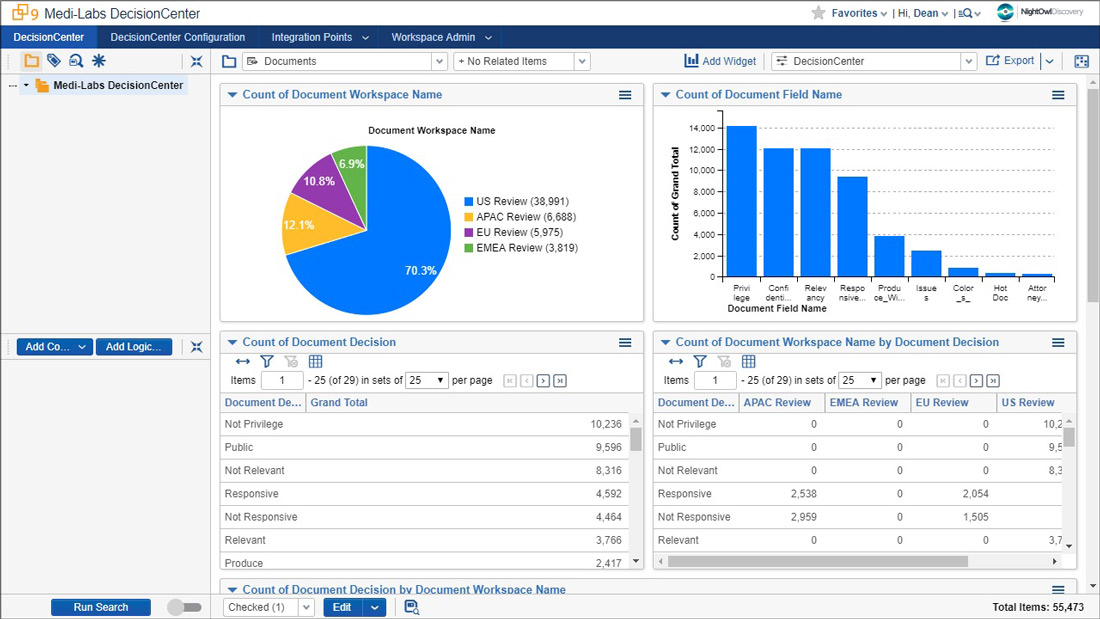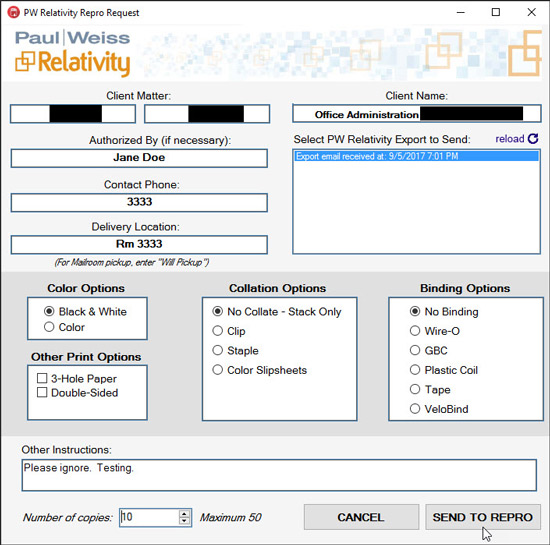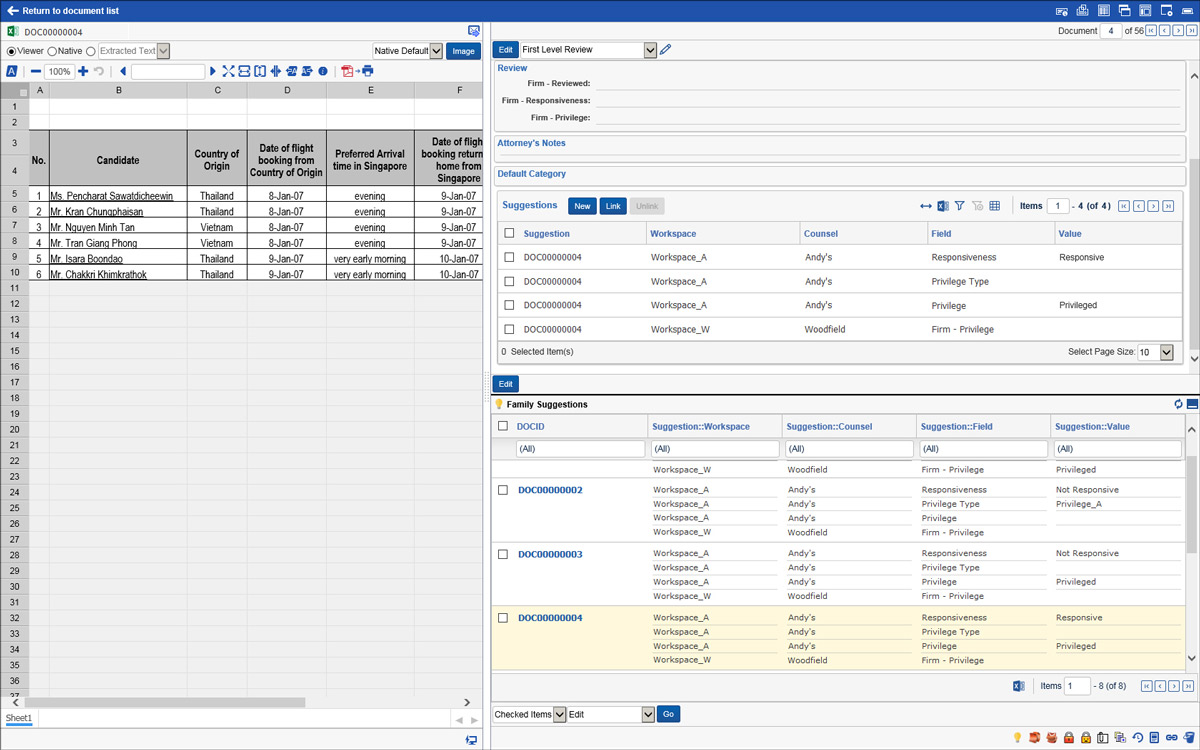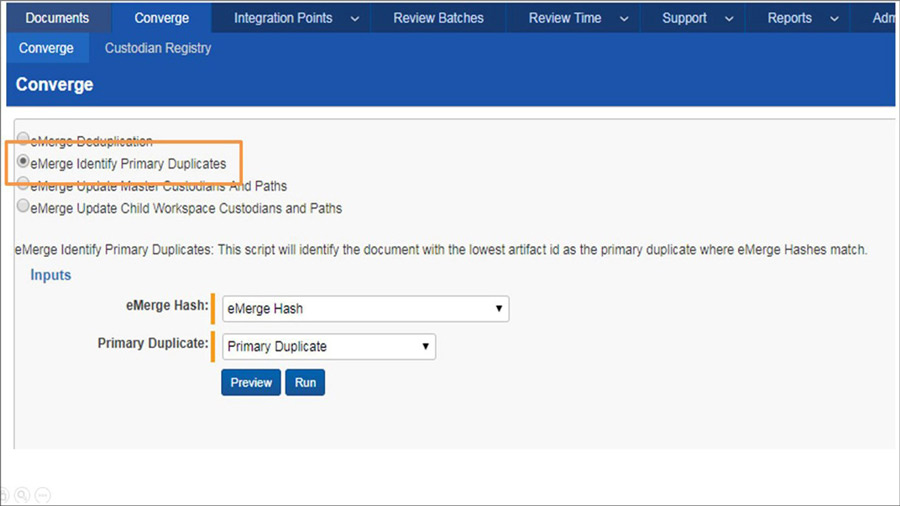With 26 submissions for the 2017 Innovation Awards, there were too many to mention in one post. All of the submissions have been highlighted this week in a three-part series. The final post in the series shares tools to help you get more from your data.
Over the past couple of days, we’ve told you about 20 innovations designed by solution providers, law firms, and corporations to take on especially tricky business and data challenges. In this final installment highlighting 2017 Innovation Awards submissions, we’ll share six innovations that help you get more from your data by reusing it, and reducing the effort to manage and track it.
Check out the remaining innovations and vote for your favorite of all 26 to take home the Community Choice award:
1. Complete Discovery Source – CDS Data Store
 CDS wanted a way to efficiently access culled data in case of changes in search terms, additional litigation, or the need to reuse data. They created CDS Data Store, making culled data easily accessible for clients, reducing the costs of reprocessing data, and increasing efficiency by allowing users to archive or restore data in “near-line” storage at the push of a button, in an easy and secure way.
CDS wanted a way to efficiently access culled data in case of changes in search terms, additional litigation, or the need to reuse data. They created CDS Data Store, making culled data easily accessible for clients, reducing the costs of reprocessing data, and increasing efficiency by allowing users to archive or restore data in “near-line” storage at the push of a button, in an easy and secure way.
 2. NightOwl – DecisionCenter
2. NightOwl – DecisionCenter
NightOwl designed a suite of tools allowing case managers and reviewers to leverage common information across multiple matters. When there is a significant overlap of documents across reviews, DecisionCenter offers the ability to reuse decisions across workspaces via a series of custom agents, saved searches, and Relativity Integration Points jobs, accelerating review by pointing teams to the relevant documents as early as possible.
 3. Paul, Weiss, Rifkind – PW Power Print Plus
3. Paul, Weiss, Rifkind – PW Power Print Plus
Paul, Weiss, Rifkind needed a streamlined, standardized way to print and bind discovery materials—otherwise only available electronically—for lawyers to bring to trials and depositions. They created PW Power Print Plus, which uses the Save as PDF mass action to eliminate the need for print teams to access Relativity. The PDFs are sent to a secure share where lawyers can connect to their self-service interface and send a print request with custom binding instructions.
4. RVM – MatterHorn
 RVM saw an opportunity to increase efficiency by reusing work product and accessing historical attorney coding and privilege decisions. They built MatterHorn to store attorney coding and privilege decisions across Relativity workspaces in a central repository and present them as ‘suggestions’ when previously reviewed documents appear in new matters. MatterHorn’s unique custom hashing process ensures RVM will not miss duplicate documents due to different processing tools.
RVM saw an opportunity to increase efficiency by reusing work product and accessing historical attorney coding and privilege decisions. They built MatterHorn to store attorney coding and privilege decisions across Relativity workspaces in a central repository and present them as ‘suggestions’ when previously reviewed documents appear in new matters. MatterHorn’s unique custom hashing process ensures RVM will not miss duplicate documents due to different processing tools.
5. Swiss FTS AG – Illuminate
 To streamline the process of highlighting and commenting on relevant sections of documents during review, Swiss FTS AG built Illuminate. The tool allows users to annotate specific text within the document viewer and view the location and reasons for their notes in the related items pane. For images without text, Illuminate also allows users to comment at specific locations in a document and jump back to them at any time. Illuminate then allows users to create and print PDFs of all documents with comments inline, so that important documents can be carried into depositions with color-coded comments and notes already included.
To streamline the process of highlighting and commenting on relevant sections of documents during review, Swiss FTS AG built Illuminate. The tool allows users to annotate specific text within the document viewer and view the location and reasons for their notes in the related items pane. For images without text, Illuminate also allows users to comment at specific locations in a document and jump back to them at any time. Illuminate then allows users to create and print PDFs of all documents with comments inline, so that important documents can be carried into depositions with color-coded comments and notes already included.
 6. Troutman Sanders – Converge by eMerge
6. Troutman Sanders – Converge by eMerge
Custodians and data often overlap between multiple matters, causing increased costs and inconsistencies. Troutman Sanders eMerge created Converge to allow clients to process and store data in a single “master” workspace, while maintaining individual “child” workspaces for each matter. Converge reduces the cost of processing and hosting data more than once and allows clients to reuse decisions to save time in review. By generating a hash for each document, clients can rest assured that all custodian and source path data is stored for production.
If you missed part 1 or part 2 of this series, take a look to learn about the other 20 solutions that were submitted for the 2017 Innovation Awards.
Which of these solutions can help solve one of your business challenges? Do any inspire you to build a new application? Vote for your favorite and join us at Relativity Fest to celebrate the ingenuity of the community.










